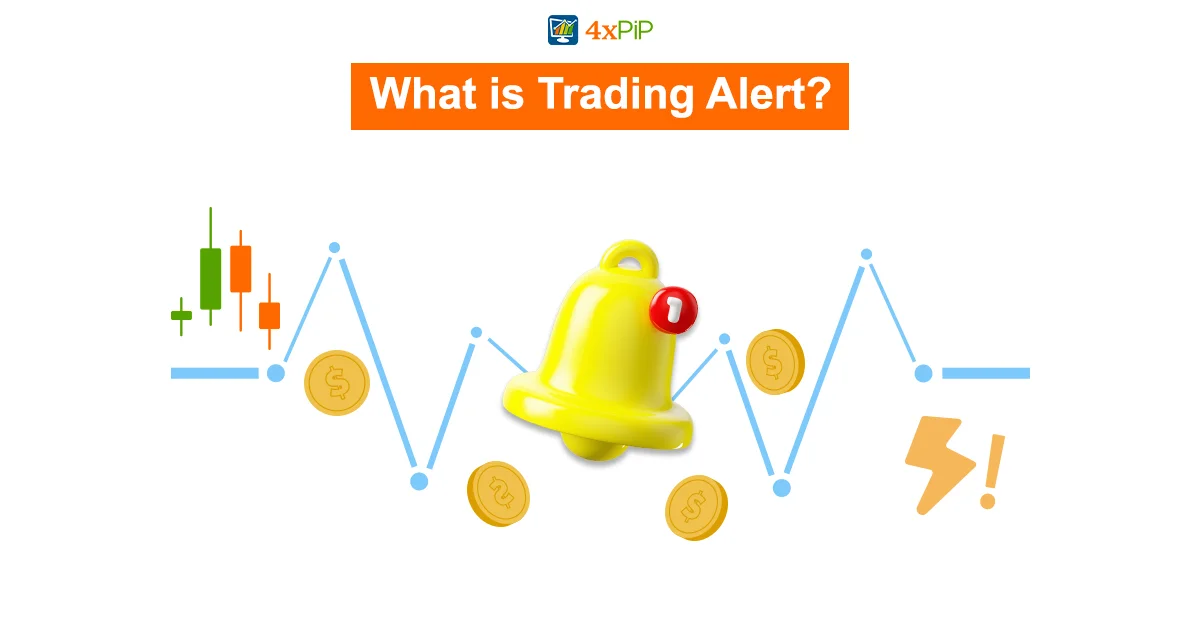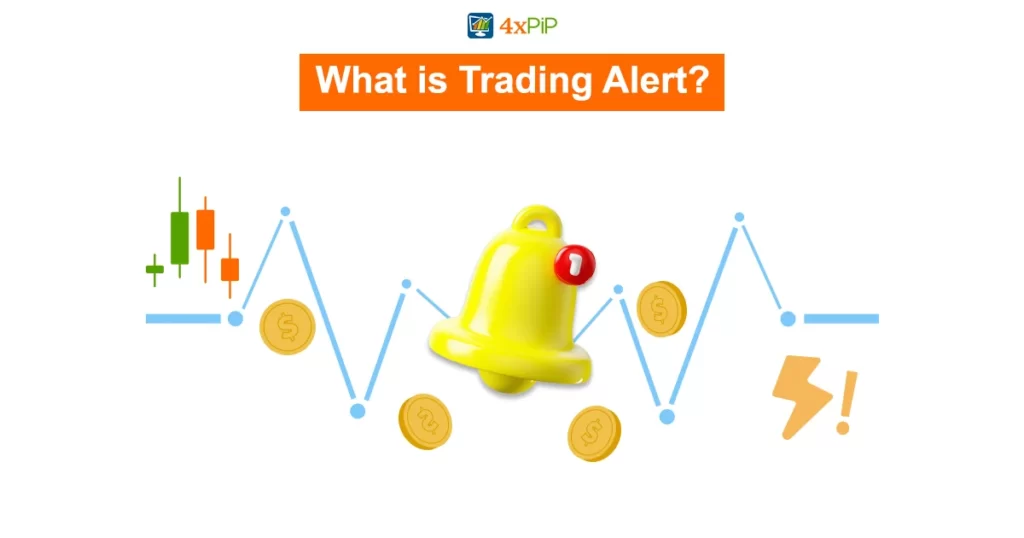In the ever-changing world of financial markets, trading alerts are crucial for traders looking to stay ahead. These alerts, sent through different platforms, give timely updates on market conditions so traders can make smart decisions. Whether you’re dealing with stocks, cryptocurrencies, or forex, understanding trading alerts is important. They act like signals, letting traders know about important market events or changes in their portfolios. These alerts are essential tools, providing information on price movements, technical indicators, and news across various assets. By using trading alerts, traders can save time, reduce stress, and improve their overall performance.
Trading alerts can take different forms, providing insights into price changes, technical indicators, and important news. If you’re looking to enhance your trading experience, check out the premium services offered by 4xPip. Contact us at [email protected] to explore how they can elevate your trading journey.
How to Set a Trading Alert?

Setting up trading alerts is like creating a plan that matches how you like to trade. Platforms like TradingView make it easy to set alerts based on certain conditions, how often you want them, and what action you want to take. As you go through the steps, think about customizing the alerts to fit what you prefer. This guide will show you exactly what to do so that your alerts keep you in the loop about important events for your investments.
Start by choosing the asset or security you want to keep an eye on. Specify conditions like prices, technical indicators, or specific news that will trigger the alert. Pick how you want to get notified—whether through email, on your phone, or within the app. Decide how often you want to receive alerts, finding a balance between staying informed and not getting too much information. By the end of the guide, you’ll know exactly how to use trading alerts to your advantage.
What to Do If My Indicator Does Not Contain Any Alert?
If your indicator doesn’t have an alert, it might be a small problem, but clever traders can fix it. Check the settings or code of the indicator to see if you can add alerts. You can also look for other indicators online that already have alerts. If your trading platform has its alert system, you can manually set up notifications based on your indicator. Being adaptable and creative is important when your indicator doesn’t do everything you need, and trying out these options can help you turn problems into chances.
How to Enable Alerts into Your MT4 MT5 EA?
MetaTrader users who use Expert Advisors can make their trading better by adding alerts. Go to the Tools menu and Options section to set up alerts in your MetaTrader program. You can choose to get alerts through email or on your mobile. Make sure to set up each option carefully. For mobile alerts, put in your MetaQuotes ID. For email alerts, configure your email server settings. Once that’s done, you can easily add alert features to your EA, making it a smart and responsive trading helper.
Types of Trading Alerts and Strategies:
Price Alerts: Set alerts for specific prices to catch potential breakouts or manage risks with stop-loss orders. This helps you keep track of price changes in active markets.
Volume Alerts: Volume alerts signal significant shifts in trading, giving insights into the strength and sustainability of price movements. Useful for understanding market trends.
News Alerts: Get alerts about news that can affect asset prices. This helps you make quick strategy adjustments based on economic indicators, geopolitical developments, and other influential factors.
Technical Alerts: Set up alerts for certain technical indicator levels so you know when important limits are reached. This helps you spot possible changes in trends or confirm current market patterns, making it easier to make decisions.
Best Practices for Trading Alerts:
To become good at using trading alerts, follow these steps:
- Double-check signals from different sources before making a trade.
- Put alerts in important spots where the market is likely to go up or down a lot.
- Keep an eye on important news using news alerts.
- Use technical alerts to watch for signs that the market might change direction.
- Doing these things sets up a strong and smart trading plan that works well even when the market is always changing.
Set up Alerts That Match Your Trading Style:
To make alerts work for you, customize them based on how you trade. Traders have different styles, like quick intraday trading or patient long-term strategies. Adjusting alert settings such as timeframes, sensitivity, and how often they pop up helps align them with your preferred trading pace. For instance, day traders might want shorter timeframes and more alerts, while long-term investors might go for broader settings to avoid too many notifications.
Dealing with False Alerts:
While alerts are important, traders face the challenge of false signals. Markets can be unpredictable, causing indicators to trigger alerts that don’t lead to significant movements. To handle this, add extra criteria to confirm your alerts. Use multiple indicators or technical analysis to double-check signals before making trades. This careful approach helps remove irrelevant information and ensures your alerts match solid trading strategies.
Use Machine Learning for Smart Alerts:
In the ever-changing world of trading tech, more traders are using machine learning (ML) to create advanced alert strategies. ML algorithms analyze a lot of past data, spot patterns, and make predictions. Adding ML-based alerts to your trading tools can give you an edge by revealing insights into potential market moves that might be hard to figure out with traditional methods. As tech gets better, traders who embrace these innovations get a leg up in handling the complexities of financial markets.
Summary:
In finance, trading alerts are important; additionally, they help you make smart choices about stocks, cryptocurrencies, and forex. These alerts are like signals that give you updates on market conditions, prices, technical indicators, and important news. To set up alerts, you pick the assets you’re interested in; also, you set trigger conditions, choose how you want to be notified, and decide how often you want to receive alerts. If an indicator doesn’t have alerts, you can try adjusting settings, changing code, or using different indicators.
For MetaTrader users, you can enable alerts through the Tools menu and Options section. Different types of alerts provide useful insights into the market. To use alerts well, double-check signals, place alerts strategically, keep up with the news, and customize settings to fit your trading style. If you get false alerts, verify them with additional criteria or technical analysis. Using machine learning in alert strategies gives traders a technological advantage in navigating financial markets. To enhance your trading, consider 4xPip‘s premium services; just email [email protected].





